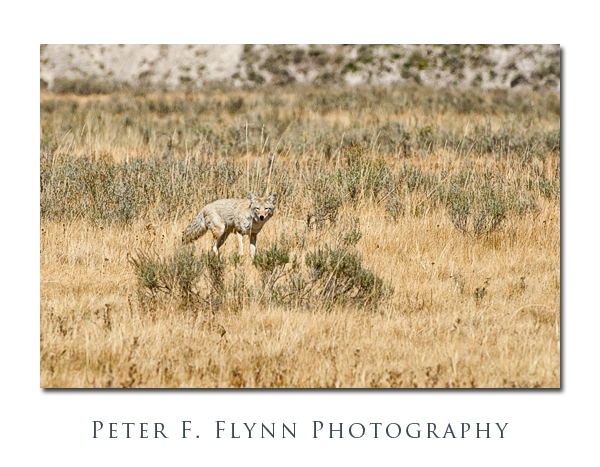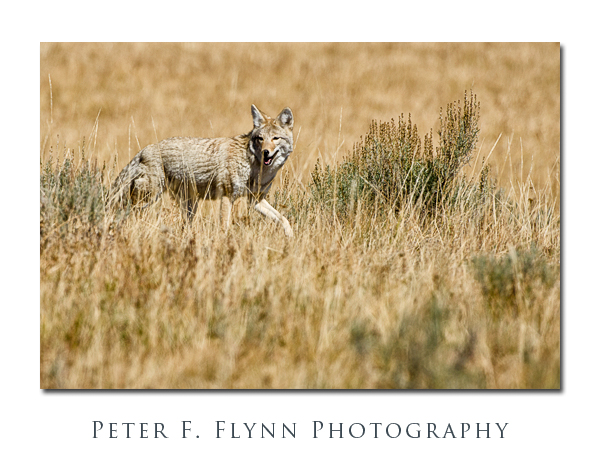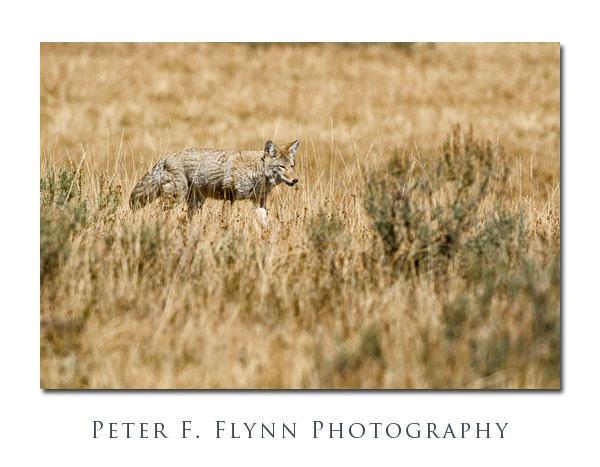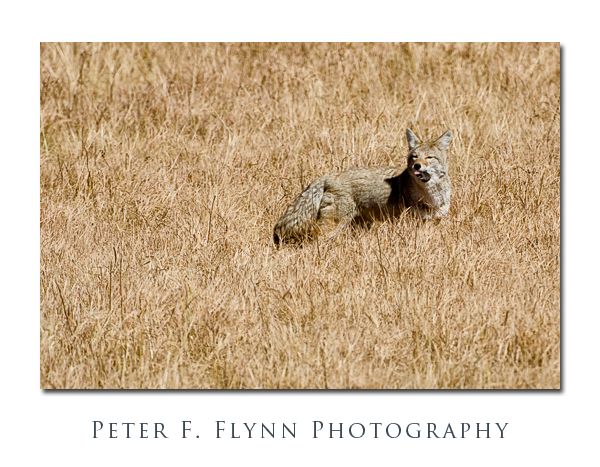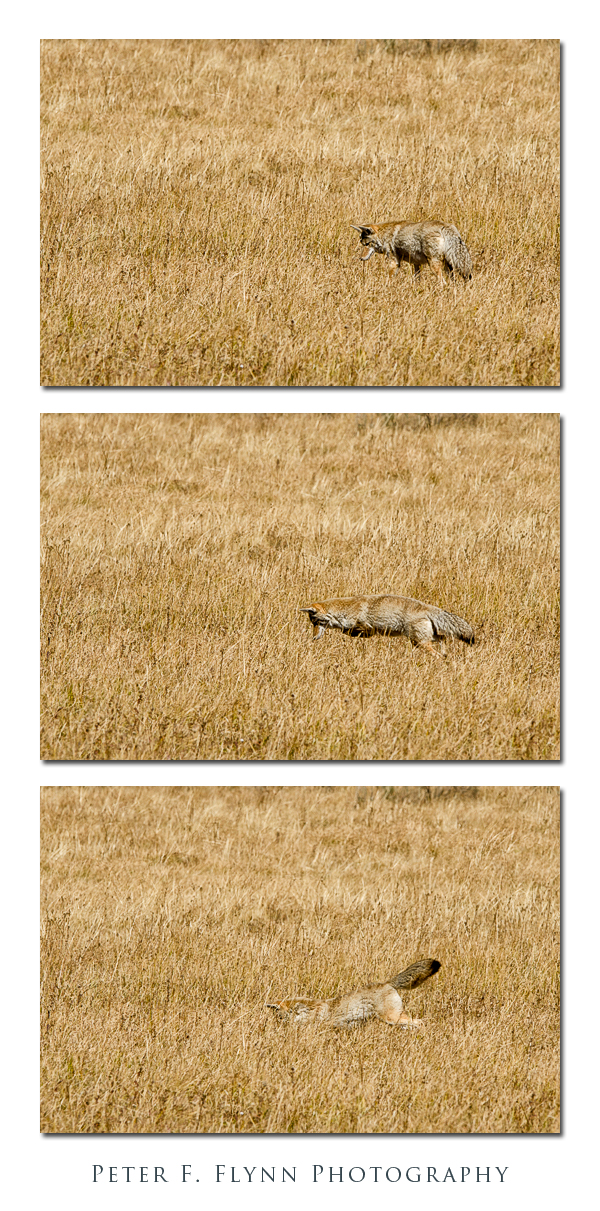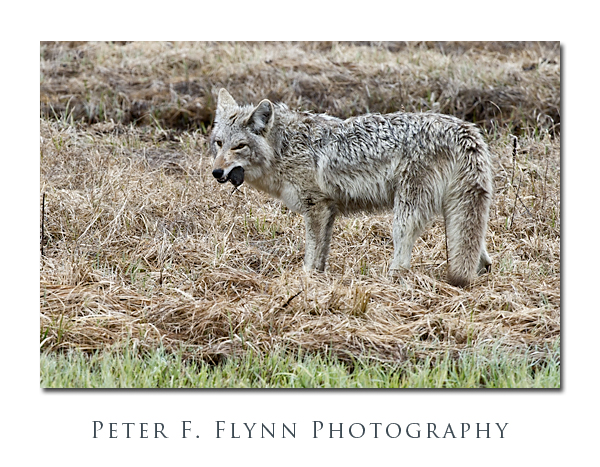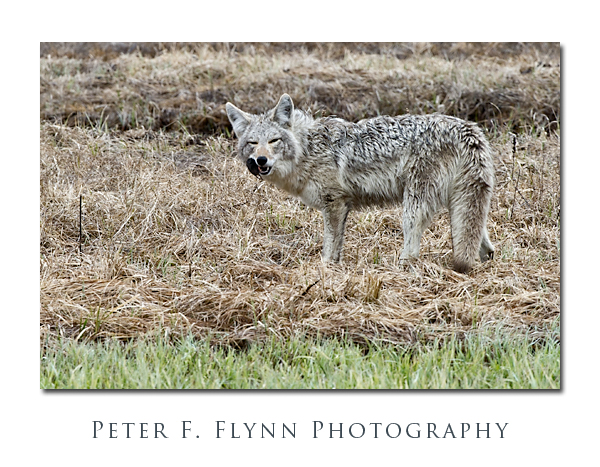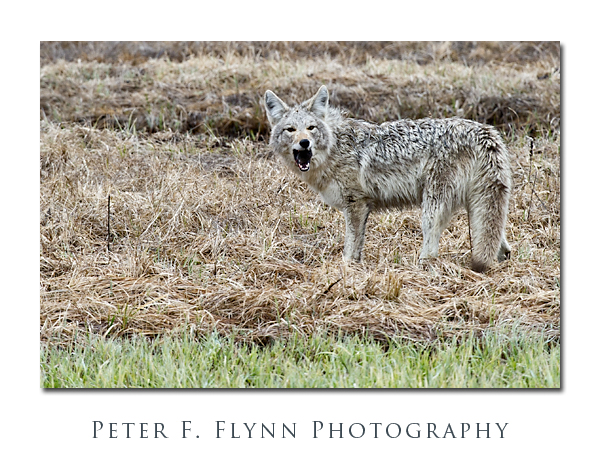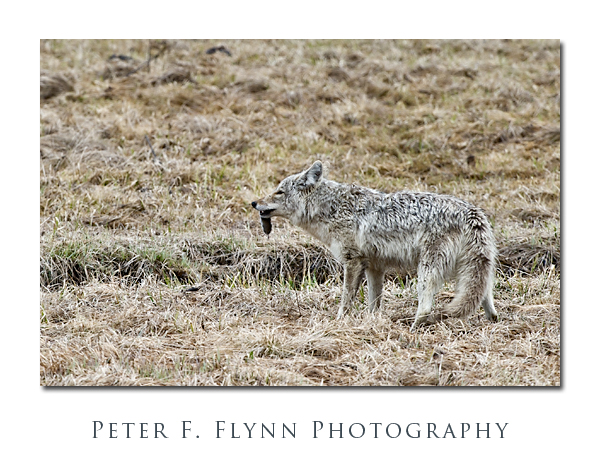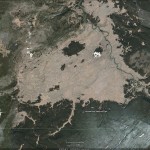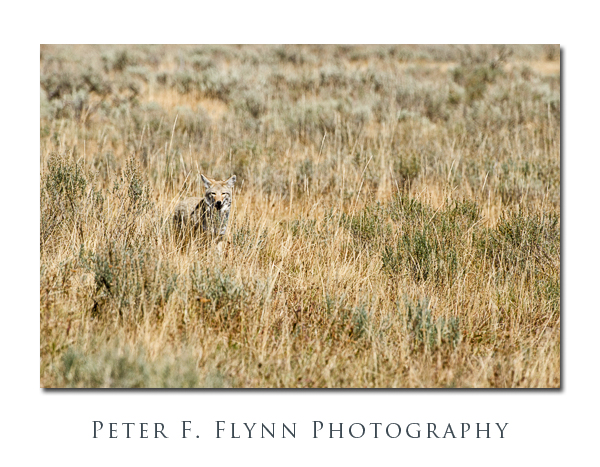 A number of native American Indian cultures have identified the coyote as The Trickster. A trickster is a sort of cunning character who makes use of subterfuge, i.e., illusion, misdirection, etc., usually with the goal of committing some sort of fraud. Accepting for the sake of discussion that it is valid to anthropomorphize wild animals, then to my eye, the suggestion that the coyote is a trickster is an apt judgement – they always seem to be up to something slightly sketchy.
A number of native American Indian cultures have identified the coyote as The Trickster. A trickster is a sort of cunning character who makes use of subterfuge, i.e., illusion, misdirection, etc., usually with the goal of committing some sort of fraud. Accepting for the sake of discussion that it is valid to anthropomorphize wild animals, then to my eye, the suggestion that the coyote is a trickster is an apt judgement – they always seem to be up to something slightly sketchy.
This trickster nature is apparent in the way the coyote carries itself, which a bit shifty, moving through the sagebrush or tall grass like a pickpocket working the crowds at a carnival. The short, persistent gait of the coyote is distinct from that of the wolf, which has longer legs and a resulting much more open stride. Parenthetically, although there are several ways to distinguish wolf and coyote, the difference in gait is the thing that I notice first.
And of course that Coyote face, which is so full of mischief… Is it my imagination, or are these guys always squinting?
Perhaps it is their opportunistical feeding behavior that impresses me most. Unlike wolves that hunt large prey in organized hierarchical groups, the coyote bounces around solo or in pairs, and will eat anything it can. Voles seem to be a staple food of the coyote. We have watched coyotes consume half a dozen voles in a single episode – in fact I cannot recall seeing coyotes eat anything but voles!
Leaving out the anthropomorphic judgements, there is no doubt but that the coyote is a highly adaptable and highly successful creature. The Trickster even adapts relatively well to urbanization. Although it is most common to observe coyotes hunting solo or in pairs, within Yellowstone, coyotes live in packs of up to seven individuals.
Prior to the reintroduction of wolves into Yellowstone in 1995, the coyote population grew to relatively large numbers due to the lack of a major predator. In the years immediately following restoration of a stable wolf population, coyote numbers fell 30-50%, but the population has now stabilized. The Yellowstone Resource and Issue 2011 report* does not provide a specific population esitmate for coyotes, and lists the population only as ‘numerous but unknown’.
Images in this entry were recorded in the Hayden Valley, Yellowstone National Park, at around 13:30 MDT on September 21, 2011, using the Nikon D7000 and the AF-S NIKKOR 200-400mm f/4G ED VR II at 400mm (600 mm FX equivalent). Exposures were made at f/5.6, f/7.0, and f/8.0 with shutters speeds at either 1/1000s or 1/1250s. Tripod setup was the Gizto GT5541LS and the Wimberly WH-200 gimbel head.
*The Yellowstone Resource and Issues 2011 report is issued annually, and is produced by the Division of Intepretation, Yellowstone National Park, Mammoth Hot Springs, WY. The report is available at the park bookstores and online at the followstone site:
http://www.nps.gov/yell/planyourvisit/resourceandissues.htm
Copyright 2011 Peter F. Flynn. No usage permitted without prior written consent. All rights reserved.
